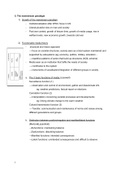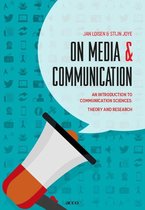5. The mainstream paradigm
1) Growth of the mainstream paradigm
- Institutionalisation after WWII, focus in US
- Liberal-pluralist view on man and society
- Post war context; growth of leisure time, growth of media usage, rise in
welfare levels, new economic growth, towards cold war
2) Functionalist media theory
- structural and macro approach
→ focus on societal structures, society seen as a total system maintained and
supported by subsystems (eg; economy, politics, military, education…
→ repetitive patterns of action that build up structures (AGIL scheme)
- Media seen as an institution that fulfils the needs of society
→ contributes to the system
→ instruments of socialisation/integration of different groups in society
a. The 3 basic functions of media (Lasswell)
Surveillance function (1)
→ observation and control of environment, gather and disseminate info
eg: weather predictions, factual report on elections
Correlation function (2)
→ Interpretation concerning societal processes and developments
eg: linking climate change to the warm weather
Cultural transmission function (3)
→ Transfer, communication and maintenance of norms and values among
different generations and groups
b. Distinction between positive/negative and manifest/latent functions
(Merton&Lazarsfeld)
→Eufunctions: maintaining balance
→Dysfunctions: disturbing balance
→Manifest functions: intended consequences
→Latent functions: unintended consequences and difficult to observe
1
, c. 3 other functions (Merton&Lazarsfeld)
Conformity function (1)
→ Enforcing prevailing social attitudes and values: enforcement of social
norms and socialization and rewarding conformism, punishing deviation
Status conferral function (2)
→ Media as agents of legitimization by conferring status to issues, persons,
organizations, etc.
Narcotizing function (3)
→ Creating illusion of participation
d. Critiques
- problematic and vague concepts
- conservative bias
→ framework of pluralist approach to societal processes
- Limited attention to socially disintegrating effects and processes of
change
3) Action oriented approaches
→ critique on linear and structural approaches
→ micro approach to social action
→ focus on individual actions and consciousness, reflexivity and interpretation
a. Symbolic interactionism
- Critique on stimulus-response and behaviorism
- How does culture structure day to day experience?
- Learning via daily interaction and mutual conditioning
- We take on different roles in different situations
- Symbols mediate and structure our experience (provide tools for
interpretation)
→mediate and structure our experiences
- occurs in a constantly changing dynamic cultural context
2





